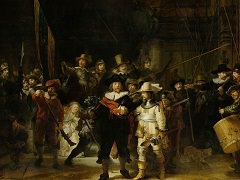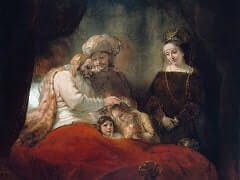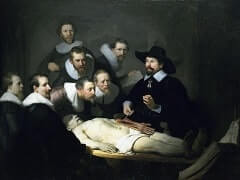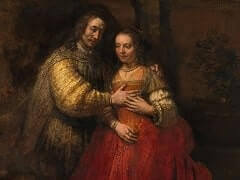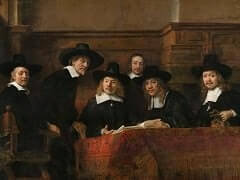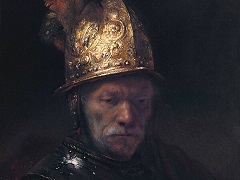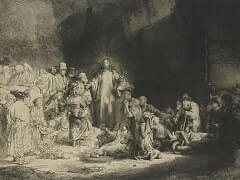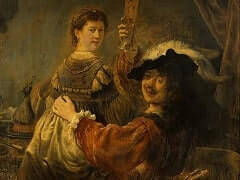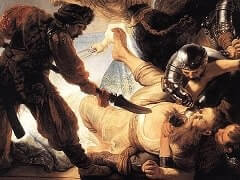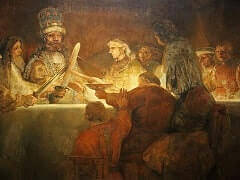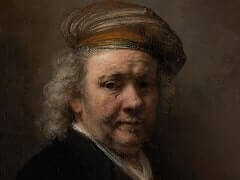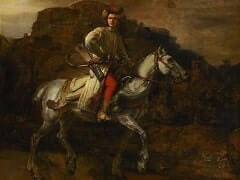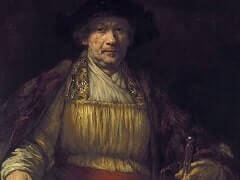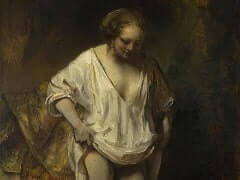The Return of the Prodigal Son, 1669 by Rembrandt
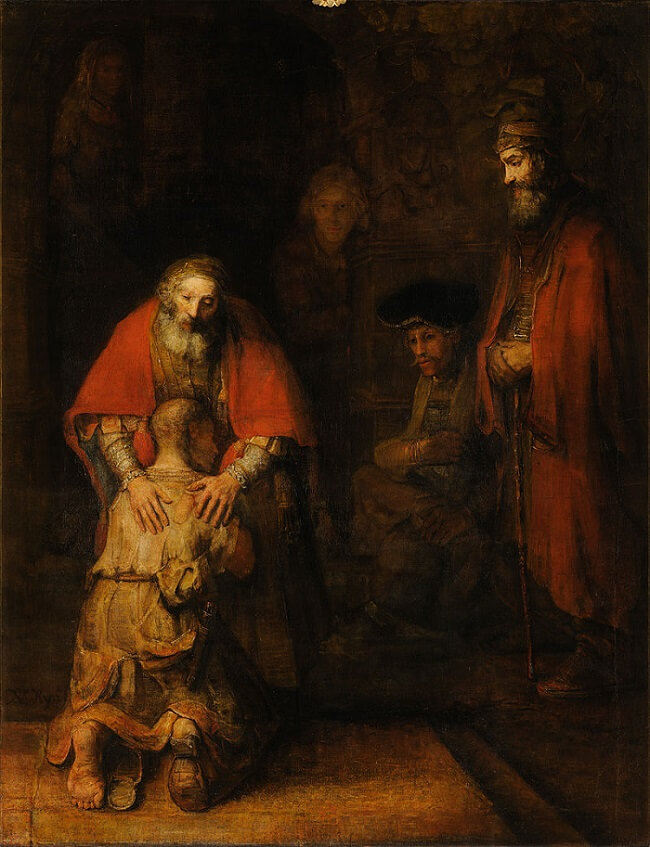
The Return of the Prodigal Son is among the Rembrandt's final works, likely completed within two years of his death in 1669. Depicting the moment of the prodigal son's return to his father in the Biblical parable, it is a renowned
work described by art historian Kenneth Clark as "a picture which those who have seen the original in Leningrad may be forgiven for claiming as the greatest picture ever painted".
In the painting, the son has returned home in a wretched state from travels in which he wasted his inheritance and fell into poverty and despair. He kneels before his father in repentance, wishing for forgiveness and a renewed place in
the family, having realized that even his father's servants had a better station in life than he. His father receives him with a tender gesture. His hands seem to suggest mothering and fathering at once; the left appears larger and more
masculine, set on the son's shoulder, while the right is softer and more receptive in gesture. Standing at the right is the prodigal son's older brother, who crosses his hands in judgment; in the parable he objects to the father's
compassion for the sinful son:
But he answered his father, "Behold, these many years I have served you, and I never disobeyed a commandment of yours, but you never gave me a goat, that I might celebrate with my friends. But when this, your son, came, who has devoured your living with prostitutes, you killed the fattened calf for him. "
- Luke, World English Bible
The father explains, "But it was appropriate to celebrate and be glad, for this, your brother, was dead, and is alive again. He was lost, and is found" (Luke 15:32).
Rembrandt was moved by the parable, and he made a variety of drawings, etchings, and paintings on the theme that spanned decades, beginning with a 1636 etching. The Return of the Prodigal Son includes figures not directly related
to the parable but seen in some of these earlier works; their identities have been debated. The woman at top left, barely visible, is likely the mother, while the seated man, whose dress implies wealth, may be an advisor to the estate or
a tax collector. The standing man at centre is likely a servant.
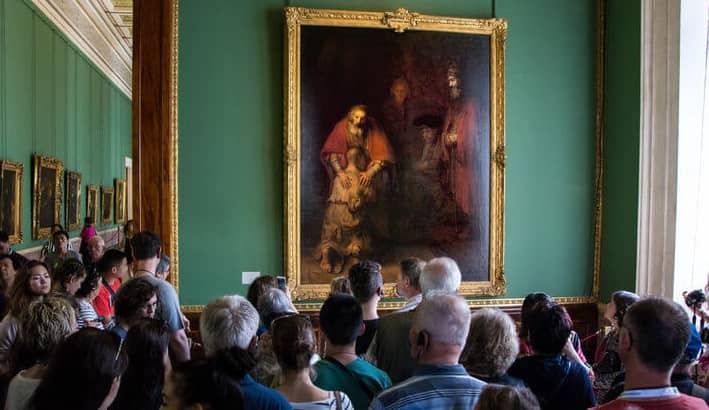
The Return of the Prodigal Son demonstrates the mastery of the late Rembrandt. His evocation of spirituality and the parable's message of forgiveness has been considered the height of his art. Rembrandt scholar Rosenberg calls the painting "monumental", writing that Rembrandt "interprets the Christian idea of mercy with extraordinary solemnity, as though this were his spiritual testament to the world. [The painting] goes beyond the work of all other Baroque artists in the evocation of religious mood and human sympathy. The aged artist's power of realism is not diminished, but increased by psychological insight and spiritual awareness ... The observer is roused to a feeling of some extraordinary event ... The whole represents a symbol of homecoming, of the darkness of human existence illuminated by tenderness, of weary and sinful mankind taking refuge in the shelter of God's mercy."


